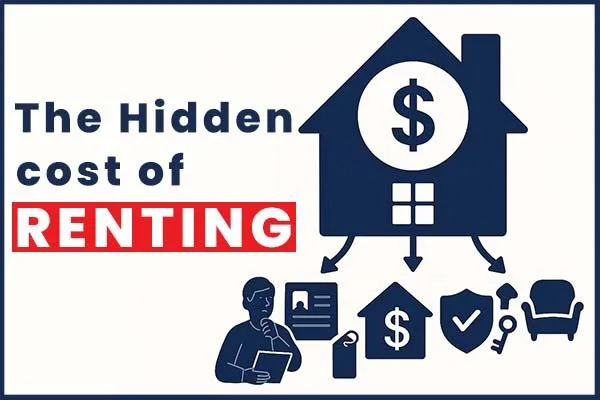
The Hidden Costs of Renting: What Renters Need to Know
Introduction
Renting a home or apartment in the United States often appears to be the more affordable and flexible option compared to buying. Monthly rent payments might seem manageable, and freedom from long-term commitments can be attractive. However, many American renters overlook a variety of hidden expenses that can quietly accumulate over time, making renting costlier than anticipated.
1. Application and Administrative Fees
Before moving into a rental property, tenants often face upfront costs beyond just the security deposit. Application fees, credit check charges, and administrative fees can easily add up, especially in competitive rental markets like New York, Los Angeles, or San Francisco. These fees, though seemingly minor, can total hundreds of dollars when applying to multiple properties.
2. Security Deposits and Non-Refundable Fees
Most landlords require a security deposit, typically equivalent to one or two months' rent. In addition, many properties charge non-refundable fees for cleaning, pets, or administrative processing. While security deposits may be refunded, any damages or lease violations can lead to deductions or complete forfeiture.
3. Renters Insurance
Many landlords now mandate renters insurance. Although it provides valuable protection for personal belongings and liability coverage, it represents an additional monthly expense. On average, renters insurance costs between $15 to $30 per month in the United States.
4. Utility and Service Costs
Unlike some mortgages that bundle certain utilities, renters often shoulder full responsibility for utilities. Electricity, water, gas, internet, and trash collection can significantly increase monthly living costs. In cities like Chicago or Dallas, seasonal fluctuations in heating or cooling can drive up utility bills considerably.
5. Moving Expenses
Relocating to a rental property involves costs such as hiring movers, renting trucks, purchasing packing supplies, and taking time off work. Frequent moves, which are more common among renters due to job changes or lease terminations, can amplify these expenses over time.
6. Rent Increases and Lease Renewal Fees
Unlike fixed mortgage payments, rents are subject to periodic increases, often annually. While some cities have rent control measures, many areas allow landlords to raise rent with each lease renewal. Some landlords also charge lease renewal fees or penalize tenants for short-term lease agreements, adding to financial unpredictability.
7. Maintenance and Repair Responsibilities
While landlords are generally responsible for major repairs, many tenants are accountable for minor maintenance tasks like replacing light bulbs, HVAC filters, or smoke detector batteries. Lease agreements sometimes outline specific tenant responsibilities, potentially increasing out-of-pocket maintenance costs.
8. Furnishing and Personalization Costs
Renters often need to purchase furniture, appliances, and decor to make their living space comfortable. Unlike homeowners who invest in long-term fixtures, renters may hesitate to make significant upgrades, yet still spend considerably on personalization, especially when moving into unfurnished apartments.
9. Lost Investment Opportunities
One often overlooked cost of renting is the missed opportunity to build equity. Monthly rent payments contribute to a landlord's investment rather than the tenant's financial future. Over time, this can result in substantial lost wealth accumulation compared to homeownership, particularly with rising property values.
10. Pet Fees and Restrictions
Pet owners frequently face additional costs, including pet deposits, monthly pet rent, and breed or size restrictions. These expenses can be substantial and may limit rental options, forcing tenants to select higher-priced properties that accommodate pets.
11. Limited Tax Benefits
Unlike homeowners who may deduct mortgage interest and property taxes on their federal tax returns, renters rarely enjoy comparable tax advantages. This absence of tax relief further emphasizes the long-term financial disparity between renting and owning.
12. Early Termination and Subletting Penalties
Life changes may require tenants to break their lease early, resulting in hefty penalties, loss of deposits, or ongoing rent obligations until a new tenant is secured. Some landlords place strict restrictions on subletting, limiting flexibility and increasing financial risks for tenants.
Conclusion
While renting offers flexibility and lower upfront commitments, it carries numerous hidden costs that can erode financial stability over time. Understanding these expenses empowers renters to make informed decisions and plan their budgets more effectively. By thoroughly evaluating all potential costs, renters can better determine whether renting or pursuing homeownership aligns with their long-term financial goals.
